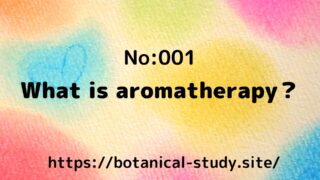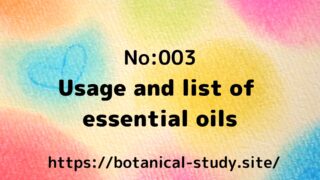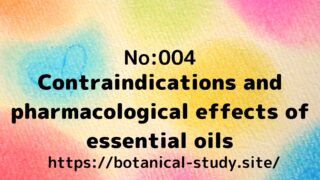2:How to purchase high-quality & high-performance essential oils

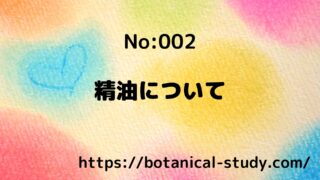
- The Difference Between Aroma-Based Ready-Made Products and Natural Aroma Essential Oils
- Key Points to Identify High-Quality, High-Performance Essential Oils!
- ‘Essential Oil’ = ‘Essential Oil’ = ‘Aromatherapy Essential Oil’
- ‘Fragrance oils’ are not ‘essential oils’!
- The difference between ‘100% natural essential oils’ and ‘synthetic fragrances.
- Are all ‘chemically synthesized’ products bad?
- Top 3 Essential Oil Brands Beloved by Aromatherapy Enthusiasts
- Top 3 Essential Oil Brands for Beginners!
- Compare essential oil brands by minimum quantity and price per drop.
- The use of aromatherapy and herbs is fundamentally at your own risk.
The Difference Between Aroma-Based Ready-Made Products and Natural Aroma Essential Oils
Recently, there have been expressions and advertisements like ‘aromatic fabric softeners’ and such.
However, since ‘fragrance’ equates to ‘pleasant scent,’ these expressions do not violate the Pharmaceutical Affairs Law (formerly the Pharmaceutical Affairs Act).
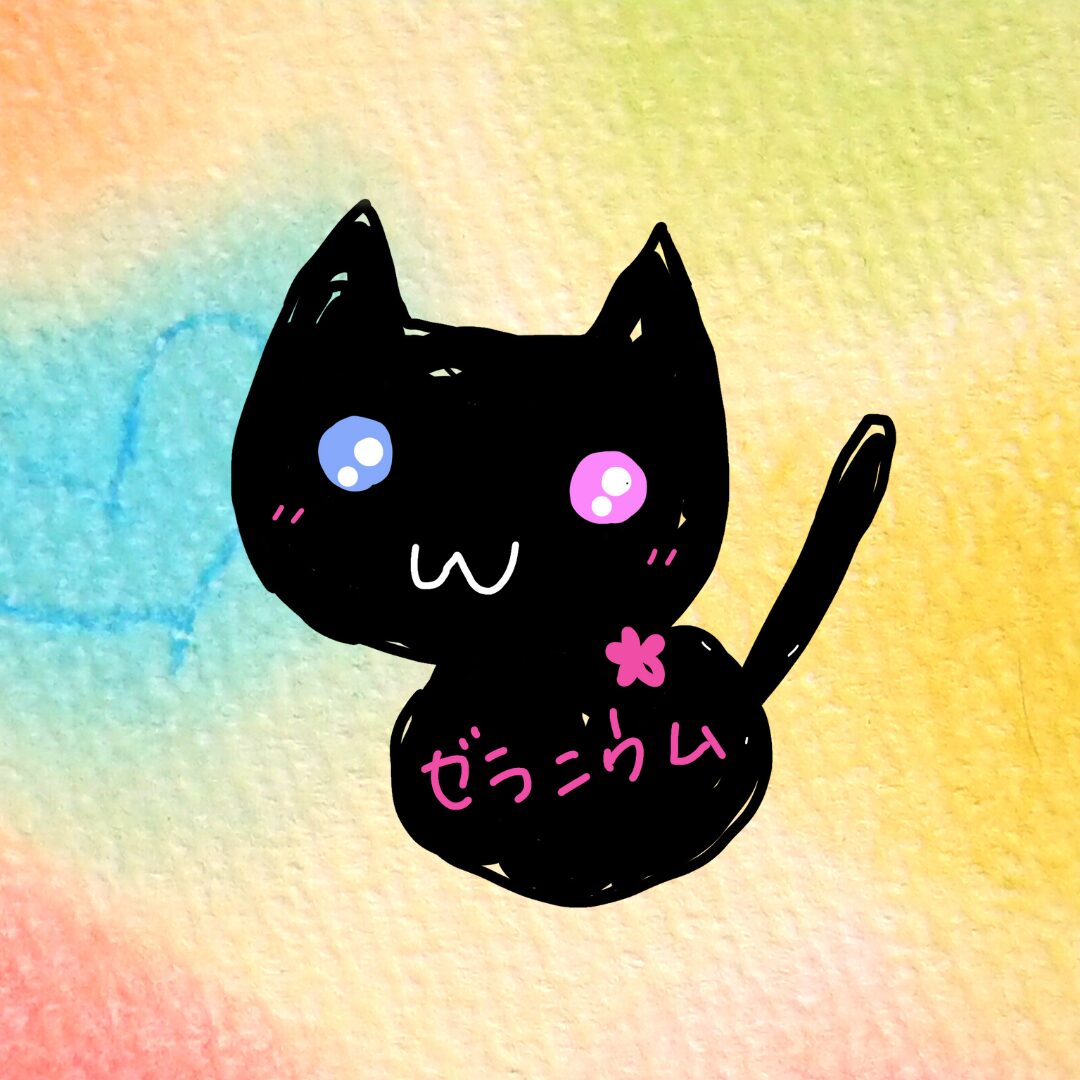
The expressions and advertising claims for pharmaceuticals, quasi-drugs, medicated cosmetics, and cosmetics are deeply related to the Pharmaceutical Affairs Law (formerly the Pharmaceutical Affairs Act).
It states that only drugs recognized by the government for their efficacy and effect are allowed to definitively use terms like ‘cure.’
Awareness of aromatherapy is increasing, and even for those who are not familiar with aromatherapy, the term ‘Petitgrain’ has become associated with promoting a peaceful sleep and providing comfort when feeling sad or having trouble sleeping.
However, ‘Aromatic softeners with the scent of Petitgrain’ only have a scent similar to ‘Petitgrain’ and do not exhibit its same effects on the mind and body, such as ‘inducing sleep’ or ‘restoring nervous balance.’

The diverse impacts on the mind and body are attributed to the specific actions of essential oils, which are aggregates of aromatic molecules.
💜If you want to know a little about aromatic molecules, click here→【9】
Key Points to Identify High-Quality, High-Performance Essential Oils!
The presence or absence of the following information:
- Botanical family and components list
- Extraction part and place of origin on the box, etc.
- Manufacturing date and expiration date
- Whether it is 100% natural and plant-derived
- Organic labeling
- Scientific name on the bottle or box
- Packed in a dark glass bottle

The aroma and other qualities of essential oils can vary even if they are the same type, depending on the manufacturer.
Essential oils cannot be bought for around 100 yen, so please purchase them from specialty stores.
‘Essential Oil’ = ‘Essential Oil’ = ‘Aromatherapy Essential Oil’
When using aromatherapy, or in conversations with friends and family, or even in our internal thoughts, phrases like ‘Which aroma should I use today?’ or ‘Which aroma do you like?’ are commonly used.
In this context, ‘aroma’ refers to ‘essential oils,’ which are aromatic molecular aggregates, liquids extracted from specific parts of natural plants, bottled in colored, non-transparent (e.g., brown) light-protective containers to maintain quality and prevent degradation.

“Essential Oil” is named for its meaning as a precious oil!
‘Essential oils’ are sometimes called ‘aroma oils,’ but this can cause confusion. Hence, I refer to them as ‘aromatherapy essential oils.’

Essential oils composed of 100% natural aromatic components have zero contaminants.
Essential oils have pharmacological effects.
💜Please note that 100% natural essential oils may have contraindications→【5】
‘Fragrance oils’ are not ‘essential oils’!
Synthetic fragrance oils, oils scented with synthetic fragrances, or oils diluted with something are also marketed as ‘aroma oils.’
It is important to note that these products differ from essential oils in terms of their effects on the mind and body, and their methods of use.

Products without the ‘scientific name’ listed are not ‘essential oils’!
The attached ‘component list’ indicates the presence or absence of contaminants.
The difference between ‘100% natural essential oils’ and ‘synthetic fragrances.
Chemically synthesized aromas, designed to mimic the scent of ‘Petitgrain’ oil, are sometimes marketed as ‘aromatic fabric softeners with Petitgrain scent.’
Since scents are directly transmitted to the brain’s limbic system, bypassing the neocortex, memories of past experiences like ‘sleeping well’ or ‘feeling calm’ associated with using ‘Petitgrain’ oil can create positive images and added value to the product.
Synthetic fragrances, on the other hand, are formulated to enjoy the luxurious impression of plants and their scents.

Synthetic fragrances that are not derived from plants have no pharmacological effects!
💜what is pharmacological action→【8】
Are all ‘chemically synthesized’ products bad?
Synthetics aren’t always bad; in some cases, they can be even better than natural alternatives.
For example, in cosmetics, when using essential oils (aromatherapy oils) to make handmade aroma cosmetics, you can customize the texture and quantity based on your skin type and fragrance preference, taking into account the effects of the essential oils.
However, many handmade cosmetics using essential oils have numerous unknown factors related to the synergy of blended oils and potential skin irritations.

It is impossible for amateurs to analyze the components and effects of handmade aroma cosmetics!
Even if you use the same recipe with the same essential oils and base materials, it is impossible to recreate the exact same product because the opening dates of the essential oils may differ.
Therefore, it becomes difficult to achieve consistent effects on the skin.
Additionally, essential oils begin to degrade from the day they are opened, and handmade cosmetics also start to deteriorate from the day they are made.
For this reason, it is ideal to make a quantity that can be used up within 1-3 days.
Chemically synthesized cosmetics are commercialized and sold after being researched for a relatively long period of time. They can be used safely and with peace of mind due to the large number of cases that affect the skin.

There are many benefits to handmade aroma cosmetics, but they can be challenging!
Chemically synthesized cosmetics undergo relatively long periods of research before they are commercialized and sold.
They can be safely and reliably used due to the abundance of case studies on their effects on the skin.
Commercial cosmetics contain preservatives, so even if a long time has passed since the manufacturing date, they can be used without causing skin problems.

Let’s use them according to your lifestyle and purpose!
Top 3 Essential Oil Brands Beloved by Aromatherapy Enthusiasts
- “Neal’s Yard Remedies” / UK – Also runs aroma schools and salons
- “Primavera Life” / Germany – Offers not only essential oils but also a wide range of aroma cosmetics
- “Robert Tisserand” / UK – Named after the pioneer of aromatherapy research
(In A-Z order, high quality and recommended)

Since the late 1990s, when aromatherapy began to spread in Japan, it has been popular.
Top 3 Essential Oil Brands for Beginners!
- “Tree of Life” / Japan – Offers an “Essential Oil Set for Testing” (two types of sets containing 10 small essential oils).
- “Florihana” / France – It’s more affordable to order directly from the company than buying through a Japanese distributor.
- “Pranarôm” / Belgium – Well-known for its medical aromatherapy and includes residual pesticide information in the analysis reports.
(In A-Z order, high quality and recommended)

“If you want to try various essential oils little by little”
“If you want to challenge yourself with personal imports”
“If you’re looking for medical-grade essential oils”
Compare essential oil brands by minimum quantity and price per drop.
One drop of essential oil is 0.05mL, so 20 drops equal 1mL
- Florihana – Minimum quantity: 5mL / Price per drop: 17 yen
- Robert Tisserand – Minimum quantity: 9mL / Price per drop: 17 yen
- Pranarôm – Minimum quantity: 10mL / Price per drop: 21 yen
- Tree of Life (Only organic, excluding test sets) – Minimum quantity: 3mL / Price per drop: 22 yen
- Neal’s Yard Remedies – Minimum quantity: 5mL / Price per drop: 28 yen
- Primavera Life – Minimum quantity: 5mL / Price per drop: 29 yen
(Sorted by price per drop in ascending order)

Citrus essential oils should be used within six months of opening.
Other essential oils should be used within one year.
If unopened, the shelf life is around three years from the manufacturing date.
The use of aromatherapy and herbs is fundamentally at your own risk.
Essential oils not only have pharmacological effects but also may have contraindications and require caution.

To achieve the desired effects, it’s important to study essential oils and the human body!
Especially for individuals who are pregnant or taking medication, consulting with a doctor or specialist is recommended for safety.

